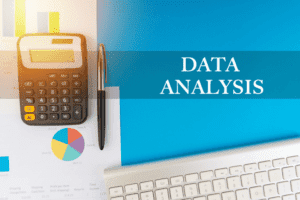Content

Both income tax and National Insurance contributions are paid only on income above a lower threshold. In Scotland this threshold is progressively eliminated for the highest earners, beginning at £100,000 per year. The following table shows employee and employer contributions by category Employer Share Of for the year 2015. The primary tax rate is 15% of gross income, but for an annual salary that is 48 times bigger than the average monthly salary (38.911 CZK in 2022, around 1.600 EUR), the rate is 23%. The minimum wage to pay income tax is 27.840CZK in 2021 (approx. 1140EUR).

The Amortization Equalization Disbursement and Supplemental Amortization Equalization Disbursement are additional contributions remitted by employers. The SAED is, to the extent permitted by law, to be funded by moneys otherwise available for employee wage increases. Under the law, you are required to inform your employees about the Paid Family and Medical Leave program by posting a notice in a place customarily used to post other employment-related notices.
Does the ESOT pay tax?
This reduced rate is applied to each employee’s first $7,000 of annual salaries and wages. Payroll taxes are part of the reason your take-home pay is different from your salary. If your health insurance premiums and retirement savings are deducted from your paycheck automatically, then those deductions can result in paychecks well below what you would get otherwise. When you start a new job and fill out a W-4 tax withholding form, your employer starts deducting state and federal payroll taxes from your earnings to pay for Social Security and Medicare.
On the other hand, the office staff of the meat packing plant—provided that they do not spend time in the production area—may have a rate that is less than 1% of salaries and wages. State governments administer unemployment services (determine eligibility, remit payments to unemployed workers, etc.) and determine the state unemployment tax rate for each employer. In addition to the employee’s Medicare tax there is also an employer’s Medicare tax. The employer’s Medicare tax is considered to be an expense for the employer.
Pay
Accrued Benefit means the amount standing in a Participant’s Account as of any date derived from both Employer contributions and Employee contributions, https://wave-accounting.net/ if any. In contracting for consulting services, experience and the record of past performance should be the main criteria for selection.
What is the best font for a resume 2022?
- Arial. This sans-serif font is often used for branding and website or mobile design, which makes it a great option if you're in the creative field or are applying to a marketing job.
- Georgia.
- Helvetica.
- Tahoma.
- Times New Roman.
- Trebuchet MS.
- Verdana.
The employee is granted options on the basis of the amount he/she agrees to save. Schemes must use a qualified savings contract which can give a tax free return on savings. The Social Security and regular Medicare taxes owed are unaffected by the number of withholding exemptions an employee may have claimed for income tax withholding purposes.
Unfunded Liability Contributions
Benefit Improvements granted after a member joins IMRF increase the unfunded liability. The actuary calculates the expected cost of a member’s benefit and spreads it evenly over the expected career of the member. If benefits change during the member’s career, the actuary’s original calculation will be inaccurate. The actuary can adjust the normal cost for future years to reflect the new benefits. The additional cost for years for which service was already granted is added to the unfunded liability. Death benefit contributions fund the death benefit paid to beneficiaries of IMRF members who die in service. If a participating member with more than one year of service dies, his or her beneficiaries are entitled to lump sum payments equal to one year’s salary.
Survey: Fewer workers consider quitting amid economic fears – HR Dive
Survey: Fewer workers consider quitting amid economic fears.
Posted: Thu, 06 Oct 2022 14:48:15 GMT [source]
The provisions of the Companies Act 1990, allow companies, subject to certain conditions and restrictions, to purchase their own shares and this can provide a market for private company shares. Employee share incentive schemes can be an effective way of offering tax savings to employees in addition to encouraging employee participation and loyalty. Enabling tax and accounting professionals and businesses of all sizes drive productivity, navigate change, and deliver better outcomes.
Calculating Pension Costs
This benefit is paid solely from employer death benefit contributions. IMRF member contributions are not used to fund IMRF death benefits. Each year, an independent actuary calculates an employer contribution rate for each employer using IMRF’s current assumed rate of return on its investments. This rate, expressed as a percent of participating payroll, determines the employer’s contribution.
- Investment Earnings less than or greater than the current assumed rate of return will have an effect on the unfunded liability.
- The Sick Funds might be owned by unions or employer associations, which can operate their own health services to provide comprehensive medical and hospital services for enrolled members and their families.
- As long as the shares have been held in trust for three years, there is no income tax, USC or PRSI liability on the transfer of ownership to the employee at the end of the three year period.
- In fact they have become best practice for rewarding and retaining employees.
- The current rate is 5.5 percent and will be 6.0 percenteffective July 1, 2022, through June 30, 2023.
- The income tax free appropriation amount is charged to the USC and employee PRSI.
Annual contribution rates also play a major role in the total amount of your annual payment. The value of the Common Retirement Fund and the rate of return on our investments have a significant impact on the rates. Under general tax law, employees are liable to income tax, USC and PRSI on the value of any asset passing to them from their employer, to the extent that they have not paid full value for the asset. The Income Tax, USC and PRSI due on award of the restricted shares must be withheld by the employer via the PAYE system and remitted to Revenue for the month of award.
For people earning below a threshold minimum salary, the employers pay a standard rate of 11 percent contributions for all Sick Funds. Since 2004, pensioners have had to pay the full contribution rate. The long-term care insurance scheme is run by the Sick Funds and private health insurers. There is a uniform co-payment for outpatient services and products and co-payment of 荤10 per inpatient day for a maximum of 28 days. In Brazil employers are required to withhold 11% of the employee’s wages for Social Security and a certain percentage as Income Tax . The employer is required to contribute an additional 20% of the total payroll value to the Social Security system. Depending on the company’s main activity, the employer must also contribute to federally funded insurance and educational programs.